Bloodborne vs Sekiro: Shadows Die Twice
Combat
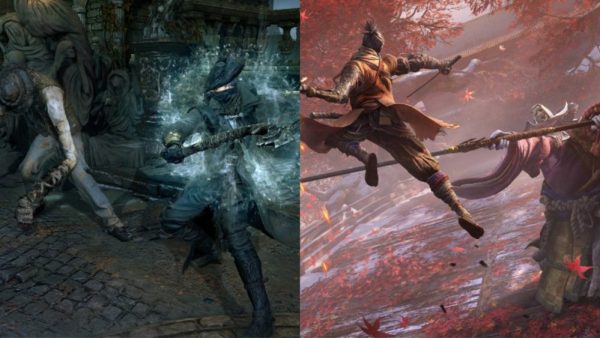
Both Bloodborne and Sekiro: Shadows Die Twice put a spin on Souls-style combat, although Sekiro to a much larger degree. Both games are focused on intense high-speed action, but Sekiro gives you far more defensive options than Bloodborne.
In Sekiro, the bread and butter of your moveset is the deflection technique, allowing you to time your block just right to deflect an attack and cause massive damage to the enemy’s posture.
The entire Posture mechanic heavily plays into everything, and although you have a dodge button in Sekiro, parrying and attacking at the right time is used far more. At the same time, Sekiro only gives you one main weapon to use, but a variety of different Shinobi Prosthetics that have varying uses, like throwing a shuriken or blasting a cone of flame straight ahead.
Meanwhile, Bloodborne sticks closer to the tried and true Souls-style of combat, but puts almost all of the emphasis on offense. With no guard button you have to rely on dodging and using keyframes, but Bloodborne’s most brilliant mechanic is the Rally system.
Whenever you’re damaged by an enemy your health will deplete with a grey bar, and you can gain back a portion of the health you’ve lost by jumping right back in and attacking the enemy. Basically, you can minimize the amount of damage you take by attacking, but therein open yourself up to more damage.
It’s a brilliant system that makes Bloodborne’s already nail-biting combat even tenser. Combine that with the various different weapons and guns, stats, and multiplayer systems, and you’ve got one of the best action-RPGs ever made.
Don’t get us wrong, Sekiro’s combat is amazing, but Bloodborne’s tense risk-reward system just barely manages to keep it on top.
Advantage: Bloodborne
Bloodborne vs Sekiro: Shadows Die Twice
Boss Battles
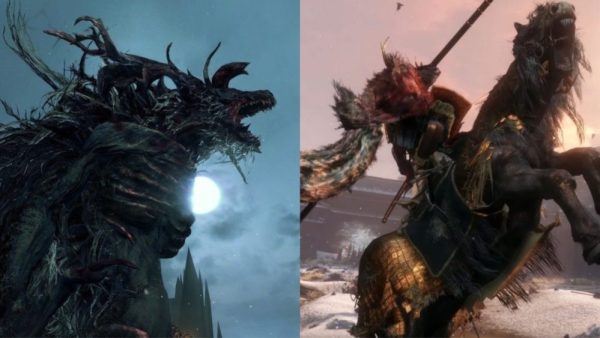
FromSoftware games have become known for their epic, and often infuriating, boss battles. Sekiro and Bloodborne both have some of the best we’ve ever seen, with the likes of Genichiro Ashina and Great Shinobi Owl in the former, and Vicar Amelia and Gehrman in the latter.
Both games have seemingly perfectly pitched boss battles filled with adrenaline, that also tie into the overall story and lore well. However, the parrying system in Sekiro makes boss battles feel much more personal and in-your-face than those of Bloodborne.
Bloodborne has you facing down monstrous Lovecraftian beasts, but only Sekiro has you engaging in epic one-on-one duels with skilled samurai and shinobi.
For all intents and purposes, many of Sekiro’s battles feel like a scene ripped straight from an epic samurai movie, and timing your blocks and deflections becomes more important than ever before.
The other aspect here is that many of the game’s bosses tie directly into the game’s story, which is told much more straightforwardly than Bloodborne’s cryptic, lore-filled world.
There’s also simply more bosses, not necessarily more pitched boss battles, but Sekiro does a great job of tying mini-bosses into its world and making them feel like natural parts of it.
Advantage: Sekiro
Bloodborne vs Sekiro: Shadows Die Twice
Leveling and Customization

Sekiro is much more of an action game, whereas Bloodborne falls strictly into RPG territory. They’re very different games, but both feature complex customization that lets you adapt your playstyle to what you feel works best.
First off, Sekiro deviates a bit from the typical idea of a Souls game with customization. You play as one singular character by the name of Sekiro, and like we mentioned earlier only get access to one weapon. This doesn’t mean there isn’t plenty to control, however, as you’ll be rewarded with XP by killing enemies that allow you to get Skill Points.
Skill Points can then be used to unlock skills that can give you new combo moves, increase your item capacity, give you new counters, and much more. There’s a wide array of skills, and beating bosses will also grant you Prayer Beads that can be offered to raise your health and attack power.
Bloodborne, on the other hand, works very similarly to Dark Souls, with Blood Echoes taking the place of Souls as your currency. You can use echoes to level up various stats and purchase items, and the risk-reward system of losing everything is just as harrowing as in Dark Souls.
The game lets you choose an “Origin” for your Hunter at the beginning, helping to distinguish your playstyle even further, which can then be iterated on by joining a Covenant.
Sekiro’s leveling and customization is fine by all regards, but it definitely gates your character advancement until you beat certain bosses. By comparison, Bloodborne’s systems just feel a bit more adaptive to your individual playstyle.
Advantage: Bloodborne
Bloodborne vs Sekiro: Shadows Die Twice
Story
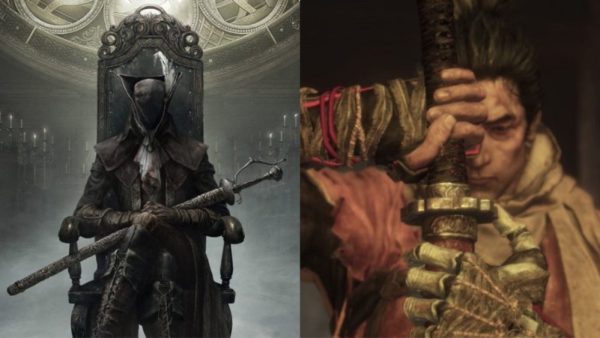
FromSoftware has made a name for themselves with their unique brand of storytelling; creating tragic worlds filled with fascinating lore and story that the player has to work to uncover. Sekiro still has that, to a degree, but also shows FromSoftware trying a much more direct approach.
Having a voiced main character in Sekiro helps make the main plot feel more cohesive, and the game makes fantastic use of its setting. Like we said earlier, Sekiro weaves its bosses into the main story to great effect, making their battles even more emotionally resonant.
At the heart of Sekiro’s story is the bond between Sekiro and his lord, Kuro, and the harrowing choices that his servitude commands.
By comparison, Bloodborne is probably the most mysterious of all of FromSoftware’s games, constantly making players question what’s going on and what the truth is. While the story there is fascinating, in order to really get as much as possible you’ll need to dive deep on item flavor text, chalice dungeons, and more.
Both Sekiro and Bloodborne have environmental storytelling in droves, but in terms of a story that’s easy to get invested in, we have to give this one to Sekiro.
Advantage: Sekiro
Bloodborne vs Sekiro: Shadows Die Twice
Setting and Presentation
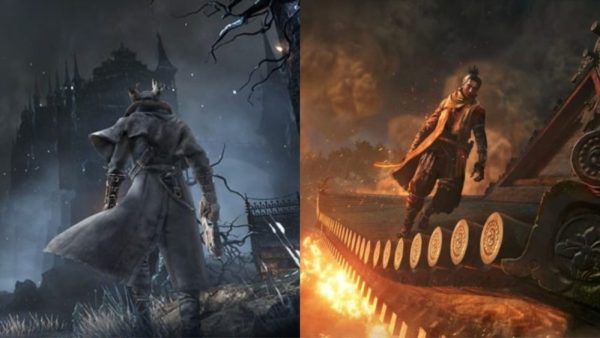
While there are plenty of games set in Feudal Japan, Sekiro manages to bring something new and fresh to the table. Disturbingly dark and bloody, Sekiro doesn’t hold anything back on the harsh realities of the era, even if the entire game and its locations are fictional.
FromSoftware has, somehow, managed to make Sekiro feel grounded in reality, while also looping in more mystical and demonic elements and creatures. It almost feels like an Akira Kurosawa film, mixed with some Quentin Tarantino, and honed down to its most brutal and bloody state.
Now that being said, Bloodborne is equally fantastic in its setting and presentation, if not more so. You can count the number of games that have done Lovecraftian horror well on one hand, and Bloodborne easily sits at the absolute top of the pile.
The decrepit and rotting city of Yarnham is as terrifying as it is wonderful to behold, and Bloodborne consistently shakes things up with new areas and aesthetics; from the ethereal Hunter’s Dream to the forsaken Nightmare Frontier.
While Sekiro is certainly bloody and barbaric, Bloodborne is downright grisly and terrifying at times, with fountains of stylized blood spraying off of enemies. Both game’s worlds are an absolute joy to explore, but Yarnham and Bloodborne still represent FromSoftware at the top of their game with aesthetic design and environmental storytelling.
Advantage: Bloodborne
Bloodborne vs Sekiro: Shadows Die Twice
Winner: Bloodborne
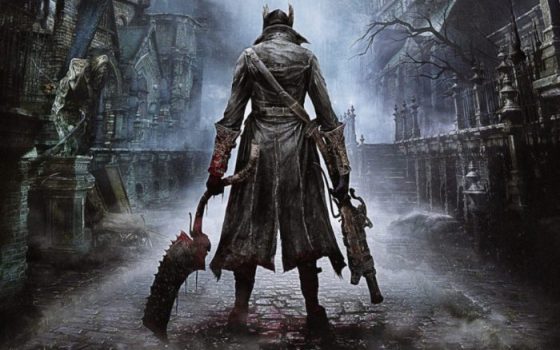
There you have it; after a hard-fought battle, Bloodborne barely manages to come out on top. To be clear, Sekiro and Bloodborne are two very different games, despite some similarities, and both do things incredibly well in their own right.
Sekiro is a worthy inheritor to the legacy of FromSoftware, but even with that, Bloodborne still feels like the studio’s magnum opus. If anything, comparing the two should show you just how talented the developers at FromSoftware are, and how they continue to surprise players with new and exciting worlds.
Here’s hoping whenever their next game rolls around, it’s something just as wildly different as Bloodborne or Sekiro.

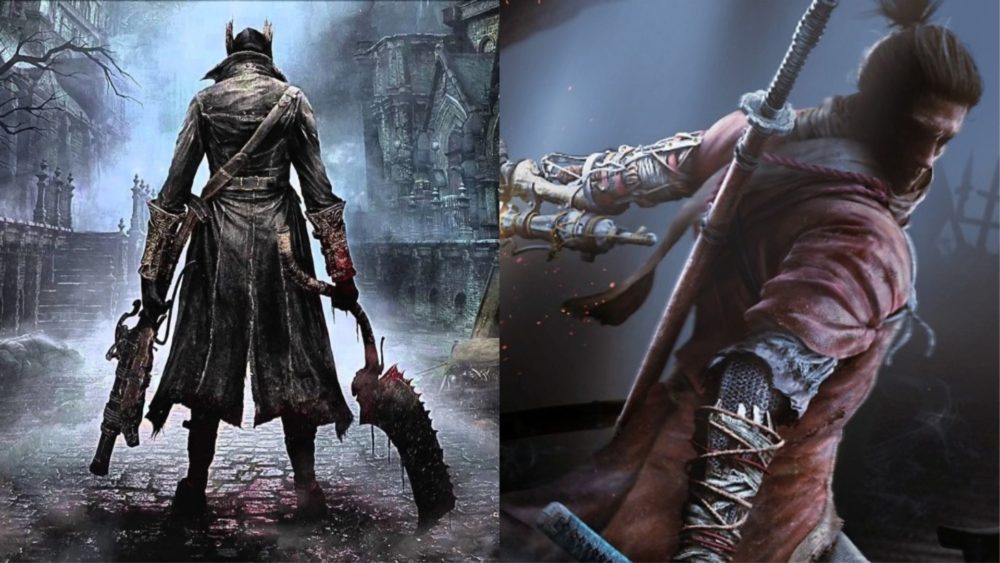












Updated: Apr 1, 2019 04:42 pm